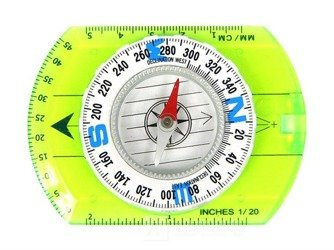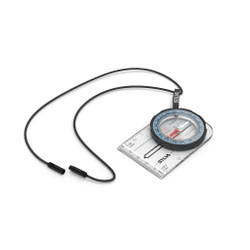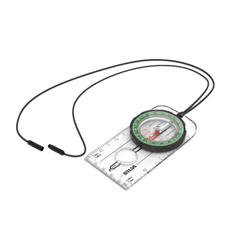Compass, or how to make it easier to navigate during expeditions?
Compass, or how to make it easier to navigate during expeditions?
Accustomed to the presence of new technologies in our everyday lives, we often forget that it is worth maintaining knowledge and ability to use things such as a compass or map. Because what if all the devices fail and we find ourselves in the middle of nowhere, without the slightest idea how to get back to the base or shelter? That's right... then the compass, already considered a thing of the past by many people, will certainly come to the rescue.
Operation and construction of a compass – a short introduction
Many people associate the compass only with their childhood years, when during geography lessons or during a meeting or scout camp, teachers and guardians patiently explained what it was and how it worked. If we did not need such information in adult life, it could be lost. It's high time to refresh them. Simply put, a compass is a device that precisely indicates the directions of the world. Using it, you can plan your route and reach your destination. The main structural element is a magnetic needle . As the name suggests, it has magnetic properties and two poles - north and south. Freely mounted in the frame, it can easily rotate and does so in such a way that one end always points north and the other south. Most often, the tip pointing to N is painted red and the tip pointing to S is painted white. In order to eliminate vibrations of the needle, the space inside the box is usually filled with an alcohol-based liquid or oil. This also makes the measurement more precise. The whole thing is closed in a glass or synthetic cylinder.
The most popular types of compasses
A magnetic compass is the most traditional and popular, but not the only type of this device. They may differ not only in terms of construction, but also in terms of purpose. Lovers of modern technology will definitely be interested in digital compasses. They operate based on data transmitted from the satellite and can be synchronized with GPS devices. However, they have the disadvantage that they may simply not work in difficult terrain or weather conditions. Is this a suitable model for survival or bushcraft expeditions ? I don't think so. Another type of compasses are map compasses , also known as plate compasses. This is one of the simplest and cheapest models. In their case, the dial is placed on a transparent plate with divisions in various scales. This turns out to be extremely useful when working with maps. They can be worn comfortably around the neck (these compasses often have strings attached to hang them around the neck) or on the thumb. They are easy to operate and work well in field conditions. Box compasses , another type of devices described here, are devices with greater durability compared to the model described above. In their case, the capsule is closed in a special metal or plastic box. In some cases, their designs are enriched with a mirror, a magnifying glass or silicone stands, which make orientation much easier. Thanks to the protective housing, the box compass is very well protected against damage and contamination.
In what situations can a compass be useful?
Enchanted by modernity, we often rely too much on the reliability of the devices around us, but the certainty that they are actually reliable is illusory. How many times has your phone died when you least expected it and your GPS stopped working just when the route was becoming the most demanding? Exactly. I guess everyone has had similar experiences. It's good to be able to rely on yourself and your abilities in such situations, and skills that are forgotten and often treated with a pinch of salt, such as reading a map or using a compass, can turn out to be really valuable. Moreover, lovers of hiking and survival or bushcraft adventures certainly appreciate much more the opportunity to test themselves in extreme situations, without the modern environment created by modern and complicated navigation devices. Just us and nature - this is a real and incomparable experience. In addition, the ability to use a compass may be useful in extreme situations, e.g. during natural disasters, blackout or evacuation in unknown terrain.
How to use a compass correctly?
Since we already know so much about the structure, types and principles of operation of a compass, it is now worth answering the most important question - how to use it correctly? It's really simple. If we use it in conjunction with a map, it should be placed on an unfolded plan, on a flat surface. A compass will quickly help you orient the map and determine the north direction. After placing the compass on the map, wait for a moment until the needle stabilizes, and then arrange the map so that the north direction coincides with the device's indications. At the same time, remember not to use any other devices in its immediate vicinity when the compass is in use. This could cause the measurement to be distorted. To sum up, it is really worth spending some time learning and practicing how to use a compass. You never know when this ability might help us get out of trouble.




